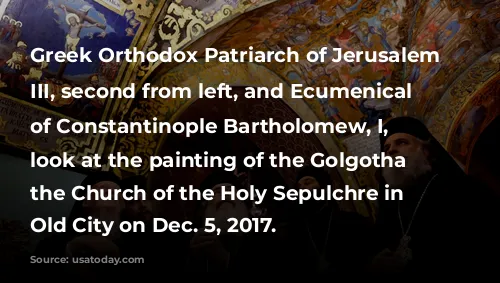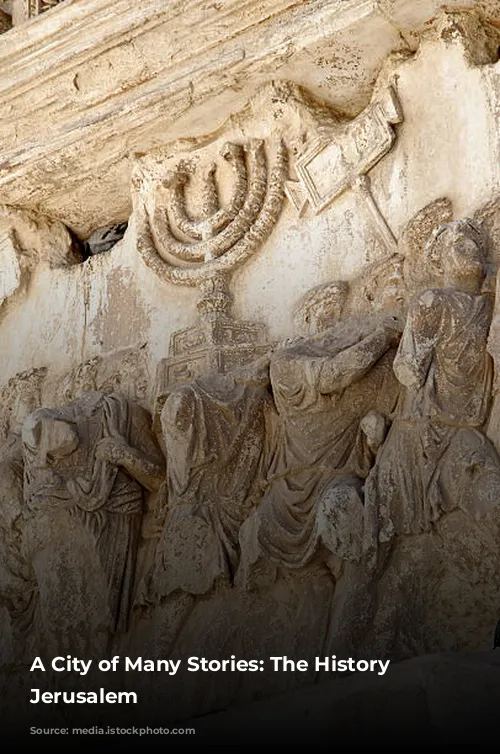Jerusalem, a name that echoes with history and significance, stands as a testament to the enduring power of faith and conflict. This city, perched on a hilltop overlooking the fertile land of Israel, has been claimed, conquered, and recaptured countless times, leaving behind a tapestry of empires, religions, and struggles. Join us as we unravel the intricate story of Jerusalem, from its humble beginnings to its present-day status as a holy city, a source of both inspiration and division.

From Pagan Tribes to the City of David
In the ancient world, long before the rise of major religions, Jerusalem was a bustling village inhabited by pagan tribes who called the land Canaan. The Bible paints a picture of the Jebusites, the last Canaanite rulers of the city, fiercely guarding their territory. But fate, as it often does, had other plans. Around 1000 BC, King David, a legendary figure in Jewish history, conquered the city, facing off against the Jebusites despite their warnings. This victory marked a turning point for Jerusalem, as David declared it The City of David, establishing it as the capital of his expanding kingdom.

The Rise of Religious Significance
David’s son, Solomon, continued his father’s legacy by constructing the first Jewish temple in Jerusalem around 960 BC. This temple, dedicated to the worship of God, would become a central point of Jewish faith and a symbol of their connection to their heritage. However, their struggles were far from over. The Israelites found themselves embroiled in constant warfare with their neighbors, the Philistines, another Canaanite tribe dwelling along the southern coastline.

Wars, Exile, and Rebuilding
The story of Jerusalem is a saga of conquest, destruction, and resilience. Around 721 BC, the Assyrians swept through the land of Israel, conquering the region of Samaria and forcing Jewish refugees to seek refuge in Jerusalem, which led to the city’s expansion. But this peace was short-lived. In 586 BC, the Babylonians invaded, laying siege to the city, destroying the temple, and exiling many Jews. This event, known as the Babylonian Exile, marked a dark chapter in Jewish history.
However, the spirit of the Jewish people proved unyielding. King Cyrus of Persia allowed the exiled Jews to return to their homeland in 516 BC. Upon their return, they rebuilt the Second Temple, rekindling their faith and hope. Nehemiah, a prophet, further strengthened the city by rebuilding its walls around 445-425 BC, protecting its inhabitants and signifying their commitment to their city.

The Rise and Fall of Empires
The story of Jerusalem is interwoven with the rise and fall of empires. Alexander the Great of Macedonia conquered the city in 332 BC, adding it to his vast empire. After his death, his kingdom was divided, and Jerusalem became part of the Seleucid Empire. This period saw the Maccabean Revolt, a fierce uprising against the Seleucid rulers and their Greek influence, which resulted in the city returning to Jewish control around 160-167 BC. This rebellion is celebrated during Hanukkah, a Jewish festival commemorating the purification of the Second Temple after the Maccabees’ victory.

The Roman Era and the Birth of Christianity
The Hasmonean dynasty, a line of Jewish rulers, emerged in 141 BC, marking a period of prosperity and growth for Jerusalem. In 37 BC, King Herod, appointed by the Romans, embarked on a grand project: the renovation of the Second Temple, adding massive retaining walls, one of which still stands today, known as the Western Wall or the Wailing Wall by Jews.
Jesus, the central figure of Christianity, walked the streets of Jerusalem, preached his message of love and redemption, and was ultimately crucified by Roman soldiers in 30 AD. His death, resurrection, and ascension into heaven would transform the city into a sacred site for Christians.

The Rise of Islam and the Dome of the Rock
The city’s history wasn’t limited to the Jewish and Christian faiths. Muhammed, the prophet of Islam, died in 632 AD, and it is believed that he ascended to heaven from a rock in the center of the site where the Jewish Temple once stood. In 637 AD, the Caliph Omar, a Muslim ruler, captured the city from the Byzantine Empire.
In 691 AD, the Dome of the Rock, a magnificent Islamic shrine, was built over that very spot, marking the ascent of Muhammed and becoming a sacred place for Muslims. This structure, a testament to the architectural brilliance of the Islamic world, stands as a beacon of peace and spirituality for millions of Muslims worldwide.

Through the Ages: From Ottoman Rule to Modern Times
Over the centuries, Jerusalem continued to be a point of contention. Muslim rulers dismantled the city’s walls in 1250 AD. However, the Ottoman Empire, under the rule of Suleiman the Magnificent, captured Jerusalem in 1517 AD and rebuilt the city walls between 1538 and 1541 AD, leaving behind a legacy of architectural splendor and cultural richness.
The 20th century brought about significant changes. In 1948, the state of Israel was established, but the city was divided between Israel and Jordan. In 1967, Israel captured East Jerusalem and annexed it, granting Arab (Palestinian) residents permanent residency status but not citizenship.

A City of Conflict and Hope
Jerusalem, a city steeped in history, faith, and struggle, remains a focal point of international attention. Its past is a tapestry woven with diverse threads of empires, religions, and cultural influences. While the city has witnessed countless wars and conflicts, it also serves as a symbol of hope and faith for millions of people around the world. As a holy city for Jews, Christians, and Muslims, Jerusalem holds a unique place in the hearts and minds of people across the globe. Its future remains uncertain, but the city’s enduring spirit and its profound religious significance offer a beacon of hope for peace and understanding in a world often marred by conflict.






